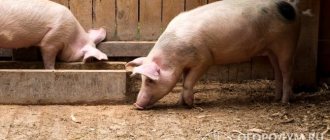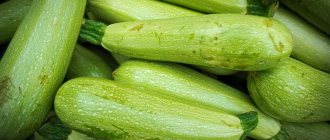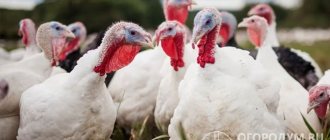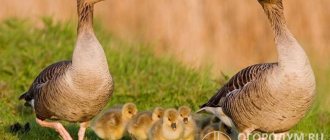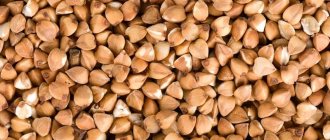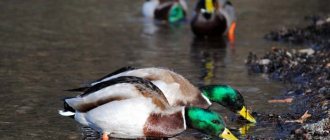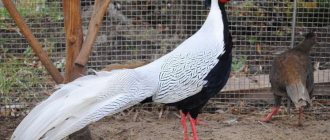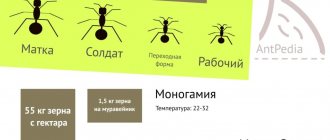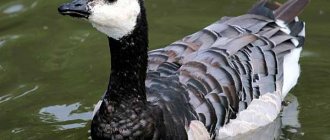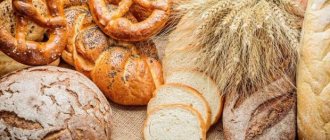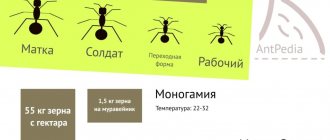The exotic rodent chinchilla is a popular pet with a pretty appearance and excellent health. With proper nutrition and care, a chinchilla can live up to 20 years. It is very important to choose the right diet for your pet. Poor-quality feeding disrupts the functioning of the reproductive and digestive systems and can cause premature death of the rodent.
In the article we will look at feeding chinchillas at home, what can and cannot be given to the animal, the features of the diet and which food is better to choose.
Chinchilla content: permitted and prohibited products
Chinchillas are kept on ready-made pelleted food, but also on grass and grains. Therefore, it is worth noting which products are included in the green sector.
- The following greens would be suitable: salad
- spinach and sorrel
- plantain
- calendula
- coltsfoot
- chicory
- parsley
- jasmine
- blooming Sally
- nettle
- alfalfa
- clover
- mint
- thyme
- chamomile
- Melissa
- goat's rue
- series
- echinacea
- dandelion
- yarrow
- calamus and burdock root
- from the apple tree
- Legumes are extremely healthy and loved, especially: lentils
- white and red beans
- beans
- peas
- soybeans
Food should be varied
- Don't forget about grain crops: wheat
- corn
- and also buckwheat
- rice
- millet
- oats
- and barley
- Vegetables worth noting: carrots
- pumpkin
- young corn
- Bell pepper
- kohlrabi
- zucchini
- zucchini
- squash
- Jerusalem artichoke
For a treat
- As for fruits, you should choose: apples
- pears (in moderation)
- bananas
- figs
- strawberries
- lingonberries
- rosehip
How to choose hay for a chinchilla
Red sector or what not to give to chinchillas:
- Fresh fruits and vegetables
- Nuts and seeds in large quantities. You should also be careful with almonds and pine nuts - they can be given no more than 1-2 times every 2 weeks!
- Herbs that are poisonous to chinchillas: fern
- horsetail
- buttercup
- rushnik
- black nightshade
- dope
- St. John's wort
- white hellebore
- cornflower
- raven eye
- acacia
A few words about the benefits of tea
Green food, vegetables and fruits
The warm season makes it possible to significantly expand the chinchilla menu. In spring, the first greens are given very carefully, starting with portions of 1-2 well-dried dandelion leaves per day. To prevent the animal from having a bloated tummy, the stems of legumes and clover are always used dry or withered. You should not feed your chinchilla only green food, forgetting about hay. This may lead to gastrointestinal disorders.
Here are the characteristics of some plants that will be useful to include in a chinchilla’s diet:
- salad is a storehouse of vitamins and mineral salts. You can give your pet 1-2 leaves per day;
- spinach – rich in easily digestible iron, contains sodium and lime. Spinach is believed to increase fertility in rodents. You can give 3-4 leaves per day;
- chicory - contains a lot of phosphorus, which growing organisms especially need. The cleansing plant acts on the stomach, regulates liver function, and increases appetite;
- Strawberry leaves – have a diuretic effect, help with diarrhea. Can be given for indigestion;
- celery – contains vitamins A, B, C. Very useful for nursing females, 2 leaves 2 times a week;
- wormwood – increases appetite, strengthens the nervous system. The pet is given several branches a week.
In addition, the animals happily eat plantain leaves, yarrow, burdock, young nettles, horse sorrel, and dandelion.
From vegetables and fruits, you can give carrots, pumpkin, squash, apples, pears, sweet peppers, bananas, grapes, figs, zucchini, potatoes, tomatoes, peaches, apricots, melons, watermelons, etc. It is not recommended to give fresh cabbage leaves to chinchillas.
Natural treats
The main treat for chinchillas is dried apples. They contain fiber, which promotes proper digestion. Remove toxic waste products and improve overall metabolism in the animal’s body. Like carrots, apples help strengthen fur and the cardiovascular system.
Dried carrots are perfect for constant pampering. It contains vitamins A, B, C, E, a large amount of iron, potassium, calcium. As you know, this is the main supplier of beneficial carotene to the body. Carrots are a natural teeth cleaner. Since it awakens the appetite, you don’t need to give it a lot at once - a pinch a day is enough. Sweet pepper in the same quantity is an excellent vitamin supplement that strengthens teeth, gums and immunity.
Raisins are given to strengthen the heart, as a cure for anemia and weakness. Chinchillas love it very much because raisins contain a lot of sugar. But you should not give more than 1 berry per week. Raspberries can be given fresh or dried, 2-3 berries per week (like hawthorn). It is rich in organic acids and salts of iron, potassium, and copper. Dried hawthorn is more of a medicine than a tasty treat. It helps to calm down, cope with stress, and is also indispensable for intestinal upset. The same amount of pumpkin seeds can be given to improve digestion, skin, and hair follicles.
Chokeberry is also rich in amino acids and rare vitamin P. Together with sweet pepper, they normalize the composition of vitamins and microelements in the chinchilla’s body. In addition to the listed delicacies, you can give nettles, oats, almonds, linden flowers, and fresh (not fried!) sunflower seeds. Chinchillas also love to sip green tea from time to time. It is rich in vitamins B1, B2, K, C, BB, and optimizes the nervous system. Green tea is a powerful antioxidant; it is better not to give more than a teaspoon per week.
Treats for chinchillas
Now about what can be considered a delicacy for these animals. This is a necessary thing - after all, chinchillas are not exactly trainable, but they are quite capable of recognizing the owner and going into his hands. This means we need an incentive tool.
Fresh vegetables and fruits are a delicacy, and they should not replace the main food. The intestines of chinchillas are designed in such a way that succulent food in large quantities is contraindicated for them. The main thing is not to feed your pet treats. A piece of fresh apple or pumpkin, a slice of tangerine, a couple of grapes a week - this is enough to pamper your ward. Once a week you can give 1-2 raisins and a special supplement with vitamins.
The animals love pumpkin seeds, sunflower seeds, almonds, peanuts, and walnuts. Pumpkin seeds are used not only as a treat, but also as a preventive measure against worms. Pine nuts contain a lot of fat, so giving them is not recommended. You can offer your pet dry tea leaves or rose petals.
Chinchillas have a sweet tooth and love treats very much and do not know when to stop eating them. When given treats in an irregular manner, animals may refuse the main food. And eating only “delicacies” will lead to metabolic disorders, diabetes and obesity.
You can diversify the treat for the animal each time: on the first day, give a nut, on the second day - dried apricots, hawthorn fruit or chokeberry, on the third - a piece of apple or melon.
After feeding any new type of treat, you need to monitor the reaction of your pet’s body. If the animal feels well and does not suffer from diarrhea or constipation, then this food is not contraindicated for it. It happens that after eating fresh vegetables and fruits, a rodent experiences indigestion. This means you need to give up succulent food.
Roasted seeds and nuts, citruses, cabbage and potatoes, meat, eggs, mushrooms, chips and confectionery cannot serve as treats! Firstly, all this can cause allergies (including hair loss). Secondly, it can lead to intestinal problems. Thirdly, it contributes to the animal’s obesity, which can be very dangerous for it.
Water
The water in a chinchilla's drinking bowl should always be fresh without any signs of flowering. It is better to give spring water, but not boiled, since it no longer contains those beneficial microelements that the body needs. Many breeders and hobbyists use bottled water from companies such as Shishkin Les, Nestlé and others. And, of course, the water should be still.
Contraindications and harm
Among the most common contraindications to the use of seeds, various allergic reactions and inadequate immediate reactions are in first place.
If you suddenly see that after eating seeds, your rabbit has foam at the mouth, it becomes difficult for him to breathe (he coughs, starts sneezing, wheezing, etc.) or massive swelling appears on his body - then know that he seeds are contraindicated.
In general, it is quite difficult to identify general groups of contraindications for all types of seeds. For example, a contraindication to consuming sunflower seeds is animal obesity, while for pumpkin seeds this is, on the contrary, an indication.
Sunflower should also not be eaten by rabbits whose age has passed 5–7 years, who have atherosclerosis or have/had high cholesterol levels.
Pumpkin kernels are not recommended to be given to rabbits that have digestive disorders, have recently suffered acute infectious diseases, or during the period of a full-blown clinical picture of any disease.
Pumpkin seeds should also not be eaten by those furry animals that have problems with the functioning of their senses: hearing, vision and smell, as this can negatively affect them.
Important! If any of the symptoms listed in this section appear, we recommend that you immediately seek help from a professional veterinarian. Among other possible harms from eating seeds, you should also expect the development of: appendicitis, irritable bowel syndrome, diarrhea (roasted sunflower), constipation (pumpkin), vomiting, various changes in the lipid spectrum of the blood, obesity (sunflower), loss of hair and claws, and the appearance of irritation on the skin
Useful tips
Keeping a chinchilla and feeding it properly is not difficult. But you can’t do without useful advice from experienced breeders of medium and large rodents.
The following recommendations for inexperienced chinchilla owners regarding nutrition are as follows:
- Determine in advance how much the chinchilla food you will use costs. Set aside money for the maintenance of the animal for a month in advance;
- Do not give your pet candied fruits and dried fruits purchased in a human store. They contain sugar that is dangerous for rodents. Instead, give homemade dried bananas, apples; you can feed your pet with them all year round;
- Choose fairly small granules. So, if a chinchilla accidentally swallows one without chewing, there will be no health consequences;
- Change food regularly, albeit gradually. In order for your animal's stomach to function properly, do not force it to eat the same thing all its life.
Foods that can be given in limited quantities
The list of products that chinchillas are fed at home includes some that can be given to the animals in small quantities.
- Nuts, sunflower seeds, peas, lentils, corn are highly nutritious food, rich in protein and fat. If the rodent is overfed with these foods, it becomes fat and its digestion may be impaired.
- Juicy greens (lettuce, dandelion) and vegetables (cucumbers, zucchini) are loved by animals, but these foods weaken them. Each day, one animal is given half a leaf of lettuce or one slice of cucumber 3–4 mm thick.
- Sweet fruits and berries are a favorite food for chinchillas, but in large quantities they can lead to metabolic failure.
- It is advisable to give branches of plants such as raspberry, willow, oak, alder and birch no more than once a week.
Each product new to the animal is given in the smallest dose, observing the pet’s behavior. If there is no deterioration in health within 24 hours after the introduction of the food, the product can be offered in an increased volume.
What does a chinchilla like to eat?
In the wild, chinchillas mainly feed on plant foods: cereals, legumes, shoots of bushes, trees and bark. Even cacti, moss and fruits are used. Very rarely, an animal can catch and eat an insect.
At the same time, feeding a chinchilla at home is not difficult: a complete diet can be made up of products that are easy to find in our latitudes. It usually includes grains, grass, dried vegetables and fruits, seeds and nuts. To meet the body's needs, the pet is also given special supplements and healthy treats.
The chinchilla is an energetic animal, and a lot of nutrients are wasted on its thick coat. Despite this, rodents eat little and are picky. Therefore, food should be given in small portions, but only high-quality food should be chosen.
The daily amount of food is 20-30 g, but you will have to adapt to each pet. If he eats all the food, you can give him a little more. But if the animal leaves or scatters food, this means that the portion must be reduced.
It is recommended to feed a chinchilla once a day in the evening, since it is awake in the dark. Thus, the body gets used to the regime, and food is digested more easily.
What you can and cannot feed your chinchilla
Inexperienced chinchilla breeders often make stupid mistakes when treating their favorite animals with pine nuts, chips or tangerines. As a result, completely hairless animals with severe allergies are brought to veterinarians; sometimes errors in nutrition cause the death of the pet. Chinchillas can be given pelleted food, hay and water. All other products must be strictly dosed. We recommend that you familiarize yourself with the list of products that can or cannot be used to feed your little friend.
Table of permitted and prohibited products
| Product | Possible in small quantities | It is forbidden |
| Grain and cereals | corn | rye |
| soybeans | ||
| rice | ||
| buckwheat | ||
| millet | ||
| oats | ||
| wheat | ||
| barley | ||
| beans | ||
| beans | ||
| peas | ||
| Greens and leaves | dandelion | raven eye |
| horse sorrel | poisonous buttercup | |
| plantain | dope | |
| nettle | white hellebore | |
| clover | lily of the valley | |
| Potentilla anseri | spurge | |
| alfalfa | digitalis | |
| burdock | marigold | |
| parsley | fern | |
| salad | Highlander | |
| spinach | field mustard | |
| raspberry leaves | larkspur | |
| strawberry leaves | marsh marigold | |
| yarrow | lumbago | |
| strawberry leaves | spotted hemlock | |
| chicory | carrot tops | |
| Branches | birch | apricot |
| oak | white acacia | |
| willow | beech | |
| aspen | elder | |
| juniper | cherry | |
| pine | cypress | |
| pear | plum | |
| Apple tree | maple | |
| sea buckthorn | chestnut | |
| Fruits, vegetables and berries | bananas | beet |
| apples | persimmon | |
| pears | fresh cabbage | |
| figs | fresh potatoes | |
| pumpkin | orange | |
| tomatoes | mandarin | |
| squash | ||
| prunes | ||
| dried apricots | ||
| raisin | ||
| strawberries | ||
| blueberry | ||
| strawberry | ||
| rose hip | ||
| Jerusalem artichoke | ||
| carrot | ||
| kohlrabi | ||
| zucchini | ||
| milk corn | ||
| Bell pepper | ||
| zucchini | ||
| Seeds and nuts | linen | apricot kernels |
| Walnut | Pine nuts | |
| almond | ||
| hazelnut | ||
| peanut | ||
| pumpkin | ||
| sunflower | ||
| Dairy products for lactating and pregnant females | kefir | |
| milk | ||
| curdled milk | ||
| milk granules | ||
| cottage cheese | ||
| yogurt | ||
| Animal proteins | meat and bone meal | meat |
| bones | ||
| offal | ||
| Other | tea | cheese |
| rose petals | sweets | |
| honey | ||
| smoked meats | ||
| alcohol | ||
| chips, kirieshki |
A balanced diet for a domestic chinchilla is the key to its long healthy life and ability to reproduce. Take care and feed your furry pets properly.
How to choose dry food for a chinchilla?
About 400 grams of food is enough for one adult animal for a month. This is due to the fact that the daily diet consists of only 50% of it, because the chinchilla simultaneously needs fruits, vegetables and certain types of grains; all this is especially true in winter, which historically can be difficult for southern animals to endure.
But this does not mean that the choice of dry food for a chinchilla can be approached irresponsibly. Knowledge about additional food for chinchillas only answers the question “What to feed your pet if you run out of food.” To choose the optimal brand of basic food, you need to compare offers from different manufacturers.
| Name | Peculiarities | Manufacturer |
| Waka High Quality | Waka is created from high quality raw materials, which go through two stages of processing. This food consists of granulated vegetables and pieces of fruit, which provides the animal with a complete diet and a good mood. | Russia |
| Little One Chinchillas | This food is considered the most popular among chinchilla breeders. This is because it is suitable for any chinchilla, regardless of the age of the individual. The composition contains cereals, vegetables and even oatmeal crackers. | Russia |
| Vitakraft Chinchilla Pellets | This diet for chinchillas with malt, enriched with all the necessary vitamins and fiber, helps maintain the health of the rodent. The composition is as simple and natural as possible, so it is suitable even for sick individuals. | Germany |
| JR Farm Classic | Another German product, JR Farm Classic, reduces the unpleasant odor from chinchilla excrement. The packaging of this food looks dubious, but in terms of quality it is considered one of the best in the European assortment. | Germany |
| Versele-Laga Complete | Granulated food Versele-Laga Complete helps to wear down chinchillas' teeth. It contains prebiotics, vitamins and minerals, so the food is suitable for chinchillas that need to strengthen their immune system. | Belgium |
| Versele-Laga Nature | Another product from the same Belgian brand is an assortment of cereals. It also contains fiber and numerous herbs, a vitamin and mineral mix. All this makes the animal’s diet healthy and balanced. | Belgium |
| Padovan Grand Mix Cavie | Italian food entered the CIS zoological goods market quite recently. But it has already gained popularity, all because of its good composition and vitamins, which are usually scarce in chinchilla foods. | Italy |
| Beaphar XtraVital Chinchilla | Food from the popular Dutch company is in great demand in the CIS. This is due to the unique shape of the granules, which helps to wear down the chinchilla’s teeth. And, of course, a composition that meets the European standard. | Netherlands |
| Benelux Grain Free | Belgian food for chinchillas is a combination of flowers, vegetables, fruits, as well as legume flakes, alfalfa seeds, flax and caraway seeds. It is low in carbohydrates, making the food ideal for feeding rodents. | Belgium |
| Lolo Pets Basic | The complete mixture with granules, extrudates, fruits and medicinal herbs also contains vitamins and minerals. An adult chinchilla needs only two spoons of food per day. | Poland |
Features of feeding
The chinchilla is a herbivore, so the basis of its diet is plant foods. This is a very picky animal that chooses the most delicious pieces from the food offered. That is why the owner must ensure that the chinchilla eats its entire portion. The feeder is spacious and comfortable. If excess food remains in it, then the amount of feed is reduced.
Chinchillas have a weak digestive system, so it is strictly forbidden to overfeed them, give them low-quality products and treat them from the table. Food must be fresh, without signs of mustiness, rot or mold. Grass, which must be included in the diet, is collected in ecologically clean areas, far from industrial enterprises and roads. Greens, vegetables, fruits are thoroughly washed and dried and only then offered to the animal.
If the chinchilla ate exclusively mixed feed, then you need to accustom it to greens gradually, starting with small portions. If the animal feels well, you can safely introduce juicy food into the diet.
On the day, a chinchilla needs the following list of products:
- compound feed – 1–3 tsp;
- green food - 5 g;
- hay - 30 g;
- additional food (twigs of trees and shrubs) - 6 g;
- water.
This animal has no sense of proportion. It can eat treats in any quantity. Foods such as nuts, dried fruits, vegetables and fruits should be given to chinchillas in strictly defined doses.
Animal food should have the following composition:
Rules for feeding pet chinchillas
The chinchilla is a herbivorous rodent that eats food in small quantities, but quite often.
Basic feeding rules:
- There should always be a supply of healthy food in your pet's feeder.
- New foods are introduced into the diet with caution.
- Balanced and varied menu.
- Chinchillas are very active, so they need high-calorie food, which also keeps the rodent's beautiful fur healthy.
Nutrition and daily routine
Chinchillas are nocturnal. Activity appears closer to 18-20 pm. The owner must ensure that there is enough food in the pet's feeder to eat at night.
It is better to feed the rodent at the same time. He will quickly get used to the regime, which will have a positive effect on the digestion process.
Chinchillas have sharp teeth that grow throughout their lives. In order for the pet to have the opportunity to grind down its teeth if necessary, you need to put tree branches in the cage, with the exception of coniferous species with a high resin content. Preferred are apple, linden, birch and hazel.
In addition to wooden twigs, special toys, mineral and chalk stones are also used.
Composition and balance of the diet
The diet for a pet rodent is selected individually, taking into account the pet’s age, health status, taste preferences and physiological characteristics of the body.
The main composition of the diet for pet chinchillas:
- Rough feed - hay, branches of trees and shrubs.
- Grain mixtures for chinchillas.
- Treats – berries and nuts, dried fruits, vegetables.
The daily food intake for an adult pet is 55-65 g. A balanced diet involves feeding in the following ratio: 25 g of roughage, 25 g of grain mixture, up to 5 g of vegetables and the same amount of additional treats.
How to feed
The first feeding takes place no earlier than 6 pm. The owner can pour grain feed into the feeder. It is not necessary to calculate the portion. Chinchillas are not prone to gluttony and obesity, so they will eat exactly as much as their body needs.
There should always be fresh and clean hay in the cage. The bundle can be placed in a certain corner or in a special hay feeder. Make sure your chinchilla is never left without this tasty and healthy food.
Drinking regime
Clean drinking water should always be freely available to the rodent. It is better to use distilled or filtered water. You should not give chinchillas regular tap water. You can also give chinchillas a decoction of chamomile, rose hips, and currants without adding sugar.
Important Principles
The basis of any food is its good quality. That is, he cannot be
- moldy,
- musty,
- stale,
- rancid.
Do not harvest green fodder in contaminated areas:
- on the sides of the roads,
- in industrial areas,
- on fields that have undergone chemical treatment against pests.
You can feed only washed and dried vegetables, fruits and herbs. Green leaves should be dried. Do not feed wet greens, only dry ones.
https://youtube.com/watch?v=xZ7ibGkn6w8
You need to gradually get used to new, especially green food. After each increase in serving size, monitor the condition of your pets.
Follow the feeding schedule.
- Daily.
- One-time.
- Regular.
- Late evening.
Evening feeding is explained by the fact that these animals are active at night. This is written in detail in the article (Farm 27, “Chinchilla at home”).
In the morning you can feed only when everything from yesterday has been eaten. The main evening food should only be poured into an empty and clean feeder.
The chinchilla's body is designed for unfavorable ascetic living conditions. They have a very long intestine, designed to extract maximum benefit from the meager food that they still have to run for. This is what happens in nature. Therefore, by creating conditions that are close to natural, you will save your pet from premature death. And for this you need to pamper him less, feeding him all sorts of goodies.
What not to give to a chinchilla
The digestive systems of humans and chinchillas are very different. Fluffy has a very long intestine, adapted for thorough digestion of coarse plant food. Therefore, under no circumstances should you give your pet treats that are familiar to humans. The following treats can be detrimental to the animal:
- milk and fermented milk products - kefir, cottage cheese, yogurt, yogurt, Varenets, sour cream, cheese;
- eggs;
- any mushrooms;
- any meat and meat delicacies, sausages, offal, lard;
- bread and bakery products;
- sweets - candies, chocolate, cakes, pastry cream, cakes, condensed milk, ice cream, corn sticks;
- semi-finished products and fast food;
- some vegetables - potatoes, onions, garlic, white cabbage;
- snacks – chips, crackers, salted nuts, popcorn;
- canned food;
- any drinks except pure water.
In nature, chinchillas occasionally feast on insects. Therefore, some rodent owners try to feed them dried worms or grasshoppers. It's better not to do this. Since the species composition of insects living in South America (the homeland of chinchillas) is noticeably different from the local one. Therefore, when feeding your pet local beetles and worms, the animal’s risk of developing digestive problems greatly increases.
What treats can be given to a chinchilla and how to make your own treats for your pet - every owner of the animal should know. After all, fluffies are very sensitive to the composition of their diet, and any deviation from the established recommendations can result in health problems for their four-legged friend.
Authorized Products
Products approved for chinchilla food can be divided into three main groups.
Concentrated feed
This group includes grain and legume mixtures. Peas, lentils, beans are rich in amino acids and will be very useful for your pet. Barley, millet, corn - have sufficient nutrients and minerals for chinchillas.
Such mixtures are sold in any pet store; when choosing food, be sure to pay attention to its composition; it must contain at least 5 different components. You can prepare the grain mixture yourself, but then you will need to get very high-quality grain
Greens and hay
Chinchillas are herbivores, so for excellent health they need to consume hay and greens year-round. Freshly cut grass must be dried, otherwise it can cause illness and poor digestion for your pet.
Here is an example of what to feed a chinchilla at home:
- young dandelion greens,
- horse sorrel,
- wheat sprouts, oats,
- plantain,
- burdock,
- strawberry leaf,
- nettle,
- timothy grass,
- meadow fescue,
- meadow bluegrass.
Treats
You can please your pet with dried fruits, fresh dried vegetables and nuts.
People often ask, is it possible to give a chinchilla food of animal origin? If we are talking about powdered milk and insects, then such a diet is even recommended for young animals and pregnant females.
List of healthy foods for chinchillas
When creating a menu for a pet rodent, you need to take into account the body's daily need for proteins, carbohydrates and fats.
Percentage of useful components:
- Proteins – up to 20%. This component is responsible for cell regeneration and fur elasticity. Lactating and pregnant rodents need to be given protein food in increased quantities, as it is responsible for the process of formation of the young's organs and milk production.
- Carbohydrates – up to 30-35% of the daily feed. They normalize the functioning of the digestive system and promote the removal of toxins from the body.
- Fats – 4-5%. They promote proper development, improve the condition of fur, and are an important source of energy for rodents.
The chinchilla's body also needs:
- magnesium – stimulating the body’s defense reactions;
- potassium – normalizes water-salt balance;
- folic acid – improves intestinal function;
- iron – promotes proper transport of oxygen to tissues.
An exotic pet's diet should contain healthy and high-quality products.
What to feed chinchillas:
- fresh hay;
- tree branches - pear, apple, sea buckthorn, birch, willow, etc.;
- dried herbs - parsley, spinach, burdock, plantain, clover, lettuce, dandelion grass, etc.;
- tree leaves;
- grain mixtures - wheat, corn, buckwheat, oatmeal, pearl barley;
- legumes - peas, beans, beans;
- pieces of dried vegetables - carrots, zucchini, tomatoes, bell peppers;
- dried fruits - apples, pears, grapes, bananas, apricots, figs;
- dried berries - blueberries, wild strawberries, strawberries, rose hips;
- nuts - walnuts, hazelnuts, peanuts.
The diet of pregnant and lactating chinchillas must include dairy products: milk, kefir, natural yogurt, cottage cheese, yogurt.
What should you not feed chinchillas?
Rodents should not be given:
- food from the human table with salt, spices, sugar, animal products, fats, etc.;
- pastries, bread;
- fried nuts, grains, seeds;
- rye grain;
- spoiled products.
And finally, we note that for the animal’s well-being, a stable diet is important. There is no need to change the food that your pet is used to very often
It is better to transition your pet to new food gradually, over 1-2 weeks. Don't forget, the chinchilla is a delicate animal. And above all, this concerns feeding. The stomach of a furry pet is very sensitive to dietary disturbances. And mistakes in feeding can lead to serious health problems for your chinchilla.
What foods should chinchillas not eat?
To avoid mistakes in planning your pet’s diet, be sure to study the list of foods that should not be fed to your chinchilla.
- meat;
- salted, smoked, spicy foods;
- prepared food for humans;
- eggs;
- dairy products;
- mushrooms;
- bread and pastries;
- pasta;
- sweets;
- potato;
- White cabbage;
- rye;
- roasted nuts and seeds;
- food for hamsters, mice, rats.
Despite the fact that chinchillas love some of the food on the list, feeding it is dangerous: the animal runs the risk of obesity, liver damage, or poisoning.
In case of lack of nutritional mixture in pet products
It may happen that the necessary food is not available at the pet store, in which case there is no need to panic. Now we will describe step by step what can be given instead of food at home.
You should make a mixture of 20% oats, 10% buckwheat, 20% wheat groats, 10% barley grains, 55% maize, 8% flaxseeds, 7% peas or chickpeas, add nettle greens to this mixture. A special complex of vitamins, ground calcium and methonine should be added to the resulting consistency.
As a result, you get healthy and high-calorie food. But there is also a drawback to such a mixture: if in the store the food is granulated, then in the home, each grain is separated from each other and the pet can sort through the food.
Vitamin supplements to complement your diet
Additional vitamins are given to animals with a lack of nutrition, young animals, females during pregnancy and lactation, as well as in case of illness. They come in various forms, but the easiest way is to add liquid vitamin supplements to water. Some manufacturers produce food enriched with vitamins.
Owners sometimes add 2-5 g of dry yeast to the animals as a source of protein and vitamin B. Also, mineral salt stones of various types are placed or suspended in the cage: the animals grind their teeth on them and replenish the balance of minerals in the body.
Attention! If during illness the animal refuses to eat, it should be fed from a syringe. To do this, use high-calorie pastes (Nutrical, Enervite) and crushed food mixed with baby food.
Chinchilla diet
A complete diet for chinchillas must necessarily include roughage, that is, hay and twig food, bark feeding, fresh herbs, various vegetables and fruits, etc. The menu for rodents should be drawn up taking into account the following factors:
- the daily requirement of chinchillas for a certain amount of nutrients;
- sex and age of the individual;
- the health status of the animal;
- physiological characteristics: pregnancy, lactation;
- time of year.
Rodents are very sensitive to various fungi and bacteria, which often affect wet hay or grains. The necessary products can be prepared in advance in large quantities, taking into account the fact that per year one individual consumes about 10 kg of ready-made combined feed and approximately 7 kg of hay.
There should always be fresh hay in the enclosure
Animals' diets should be dominated by foods high in fiber and protein. In addition, chinchillas need adequate amounts of minerals, vitamins, fluids and fatty acids. Lack of various nutrients leads to increased morbidity in animals and their early mortality. Deficiency of protein and calcium is especially dangerous for pregnant females, as it causes various malformations in the offspring.
Feeding a rodent: hay for chinchillas
Hay is the most important component of a chinchilla's diet. Most experts believe that there should always be hay in the cage of these rodents so that the animals can eat as much of it as they want. It is rich in fiber, which is so necessary for animals.
Properly harvested high-quality hay smells pleasant, without sticks, debris and other impurities. Wet and moldy food is not suitable for animals.
In specialized stores you can find various types of hay (from legumes, meadow, forest, etc.). You can prepare it yourself.
The best hay is made from leguminous grasses (clover, alfalfa, vetch). It contains vitamins and minerals (phosphorus and calcium) necessary for animals. In addition, it is very nutritious and contains a sufficient amount of digestible protein. Leguminous grasses need to be mowed in the budding phase or at the beginning of flowering.
Vika's Clover
Alfalfa
The best time for mowing cereals is the heading phase. Cereal hay (meadow fescue, timothy, cocksfoot, meadow grass) is somewhat inferior to legume hay (it contains less protein and minerals).
Forb hay is very nutritious if it contains legumes and cereals, as well as bird buckwheat, salsify, etc. Before flowering, herbs are especially rich in vitamins and nutrients. Therefore, the hay should consist of forbs, mowed before the first flowering of the grass. Late-cut grasses have low nutritional value.
Ferns, rush grass, datura, black nightshade, spurge, horsetail, white hellebore, henbane, cornflower, crow's eye and other poisonous plants should absolutely not be included in chinchilla hay.
How often to feed a chinchilla
Chinchillas eat very carefully
Most chinchilla breeders are inclined to believe that it is better to feed your pet more than once a day, but to divide the daily portion of food - this is approximately 2 tablespoons of dry ready-made food, divided into 2 times.
That is, you pour 1 tablespoon of food into the chinchilla's bowl in the morning, and pour 1 tablespoon in the evening, before bed. It is recommended to remove any leftover food, if any, rather than supplement it with a fresh portion.
By the way, it is better not to overfeed the animal, despite the chinchilla’s good appetite (healthy individuals are almost always ready to chew something), you should not indulge such weaknesses of the rodent, as this can lead to obesity, and in general spoil the character of the chinchilla. Quite often you come across such statements from chinchilla owners that if they overfeed, their rodent begins to row and creates chaos in the cage.
Chinchilla
When choosing foods for herbivorous chinchillas, it is important to remember that they are rodents, so foods of plant origin are their prerogative. Living in their natural environment, chinchillas do not consume too much food, since its quantity is limited by various factors.
Therefore, when keeping these animals at home, you need to make an effort to ensure that their diet is varied and rich in vitamins and various mineral nutrients.
Particular attention should be paid to limiting their consumption of foods that are too high in calories or fatty foods.
The currently available food option for chinchillas is granulated food. This concentrate is easily absorbed by the animal’s body, so the daily dose of this food can be limited to 1-2 tablespoons per day. People who breed chinchillas professionally prefer to give their pets special granules in the form of brownish sticks. This mixture usually consists of wheat bran, yeast, oats, grass flour, and salt, which provides a complete set of nutrients for the animal’s body. Of course, chinchillas must also be provided with minerals such as phosphorus, iron, zinc, calcium, iodine, carotene, as well as vitamins A, B, E, K and others. The ideal option to meet the needs of a fur-bearing animal’s body is raw fiber granules.
Due to the fact that the energy value of one granule of such food is approximately 2500 kilocalories, you need to carefully monitor the dosage of their consumption. Don’t forget about the mixture of grains, which is an important and necessary part of a chinchilla’s diet. The grain mixture should ideally include buckwheat, wheat, flax, oats and milk thistle
If we take the ratio of grain in granular feed, then it should be 6-7% of the total weight. And, naturally, water is an essential component of a chinchilla’s diet. There should always be enough water in the drinking bowl, always fresh and freely available to the pet. Under no circumstances do experts recommend giving boiled water to animals. The opposite is true - it should be cool and filtered.
Ready-made feed
Today, in any specialized store you can purchase ready-made food for furry pets. They come in two types: regular and granular. Granulated food is more economical, but chinchillas often prefer whole food, in which all components are contained in their natural form. Animals often choose individual “goodies” from them, but the rest has to be thrown away. When feeding granulate, the diet turns out to be more balanced, since the animals, willy-nilly, have to eat everything. The granules, as a rule, contain all the vitamins and minerals the animal needs, including calcium. 1-2 tablespoons of this food per day will be enough for the animal.
From time to time, you can feed rodents with ready-made rabbit food. In principle, feeding chinchillas is not much different from feeding rabbits. In the summer, the same green grass, vegetables with tops, plant seeds, fruits. In the cold season - hay, tree branches (birch, apple, linden, pear, hazelnut, willow, willow), dried fruits (apples, raisins, dried apricots, nuts). Dried fruits are offered to the animal, pitted and finely chopped. The fruits of barberry, rose hips and hawthorn are very useful. They are given one berry 1-2 times a week.
What do chinchillas eat at home? List of products:
- Tomatoes, celery, cucumbers, carrots, pumpkin, zucchini.
- Apples, pear, melon (very little), berries, bananas (very little), rose hips, hawthorn, raisins (very little, because they are sweet). In general, too sweet fruits or berries should either not be given at all, depending on the health of the animal, or their consumption should be significantly limited.
- Tops of carrots, peas, as well as clover, dandelions, burdock leaves, plantain, strawberry leaves, nettles. And also sprouted cereals. Cereal sprouts are especially relevant in winter, when problems arise with fresh greens.
- Dried bread, namely crackers or crispbread. A small amount of.
- Various treats - you need to give them a little, but constantly. It can be dried fruits, berries.
You cannot give a lot of fruits and vegetables, only in the form of a small additive to the main food. Otherwise, the rodent's sensitive digestion will be upset. Fresh leaves should be dried a little before serving, and carrots and other root vegetables must be washed. It is not recommended to give a lot of beets. In nature, of course, animals eat branches and roots unwashed, but domestic animals, which are also bred in captivity and have never lived in the wild, have a more delicate digestion than their wild relatives. Therefore, they are very sensitive to dirty or spoiled food. But even with proper care and hygiene, they live much longer than their wild counterparts.
But this list is far from complete. There are also differences of opinion among experts. So it’s better to check your pet’s diet in advance.
By the way, you need to feed the animal once a day, at a certain time, preferably in the late afternoon. And if it tears the food and scatters it, it’s worth reducing the portion a little. The food must be eaten completely. Water should always be fresh, and experts recommend that it be boiled or distilled.
What can you feed a chinchilla besides food?
Now let’s figure out what else you can feed your chinchilla. For proper development and grinding of teeth, it is necessary to allow the child to chew on twigs, sticks, and driftwood. But there is a whole list of tree species that should never be given! They are poisonous to chinchillas!
These are trees such as:
- Maple.
- Cherry.
- Plum.
- Elder.
- Apricot, peach, nectarine.
- Almond.
- Oak - good for diarrhea, but can cause constipation in healthy animals.
- Pine and pine cones.
- Spruce and fir cones.
- All citrus fruits.
- Mango.
- Sandalwood.
- Cypress.
- Such an exotic tree as sequoia, etc.
In general, experts consider the branches of all stone fruits to be poisonous to these rodents! The list is far from complete, so you need to be very careful not to poison your pet. And try to check all tree species in advance before treating the animal with branches.
What to feed a chinchilla to painlessly grind down its teeth? We should also not forget that chinchillas, like all rodents, have teeth that grow throughout their lives. In nature, they grind them down on their own. At home, the owner should take care of this. Beech is highly recommended for grinding teeth - it has hard wood that can replace stone.
If there is no suitable hard wood, then they give it a stone to chew on. Naturally, it should not be taken directly from the ground and dirty. For pets, all food and items should be thoroughly washed before use.
How to cook it yourself
The best treat for any pet is one prepared by the owner, with care and love. A few simple recipes will help you pamper your favorite animal with homemade treats:
- Dried fruits and vegetables . The cooking method is simple. Selected ingredients (for example, apples, pears, carrots, zucchini) must be washed and cut into thin slices. Then place it on a baking sheet in one layer and put it in the oven for 15-20 minutes at a temperature of 190-200ᵒC. You can also dry the treats in a special multi-tier electric dryer. In the summer, you can dry the treats right outside, in direct sunlight. In this case, it is necessary to ensure that the fruits and vegetables are dried, but not woody.
- dry berries in the same way . For example, raspberries, hawthorn, rose hips, strawberries. Just before drying, you need to check that there are no rotten or moldy berries on the baking sheet.
- Sweet balls . To prepare, you need to mix in a deep bowl the usual food mixture that the chinchilla eats daily, seeds and pieces of fruit, berries, and dried fruits. After that, add a little honey as a binding base. The resulting adhesive mass must be formed into balls and placed in an oven preheated to 180ᵒC for 20 minutes.
- Tree branches . Chinchillas grow teeth throughout their lives. Therefore, fluffies need to constantly grind them down. For these purposes, a mineral stone is usually placed in the pet's cage. But it will be much more pleasant for the animal to sharpen its teeth on a fresh, wood-smelling twig. The preparation method is simple. Simply cut off a few side branches, clear them of leaves and wash them. Then lightly dry it in an oven or electric dryer. The pet will like twigs of apple, pear, linden, birch, and rowan.
Branches of some types of fruit trees are strictly contraindicated for chinchillas. Under no circumstances should you give your pet branches of coniferous trees, citrus trees, plums, apricots, peach, cherry, maple, bird cherry, or lilac.
It is worth keeping in mind that all dried herbs, vegetables, fruits, berries, twigs should be stored in a cool, dry place in paper bags. If storage conditions are met, the shelf life of prepared treats is 2 years. But it’s better not to wait until the deadline, but to feed the treats 2-3 months earlier.
Feeding mode
When thinking about the issue of feeding a chinchilla, it is necessary to remember that the activity phase of this animal occurs mainly at night. Therefore, with the arrival of dusk, you can fill the bowl with food. The animal will see the bowl and run up to eat. But you don’t need to expect that your pet will attack the food, basically he will eat a few grains and run around the cage to jump, after a while he will return to the cup and so on all night.
Stability is also important to ensure the animal’s good mood and well-being. It is not recommended to frequently change food to another manufacturer, as this may have a bad effect on your pet’s well-being. If you still need to change the food, you need to do it gradually, dragging out the process for the whole week. A mineral stone must be present in the cell during this process at all times. The pet will chew through it as needed.
Read! Chinchilla in the house: pros and cons
Next, let's take a closer look at the types of feed.
What should the portion be?
The standard portion for an adult is up to 30 grams of food. For young chinchillas, 20 grams is enough. What can you feed a chinchilla besides food? In addition to grain nutrition, you can give your pet vegetables and pieces of fruit, and special food for medium and large rodents. They can be found at any pet store.
If the animal does not eat all the food offered, gradually reduce the portion. Food should not stay in the chinchilla's cage for a long time, because otherwise it will stock up. They will decompose fairly quickly, creating an unpleasant odor in the room.
Useful! Separately, it is necessary to provide the animal with a feeder with hay and a drinking bowl for chinchillas, stably filled with clean drinking water.
Can chinchillas have walnuts and chestnuts?
Chinchillas are herbivores and it is natural for them to eat vegetation. Their diet should be high in fiber and protein, but low in fat and moisture.
Approximate feed composition:
- 35% carbohydrates;
- 15% protein;
- 30% fiber;
- 4% sugar;
- no more than 3.5% fat.
In their natural environment, chinchillas eat bark. It is the main supplier of fiber. If it is not enough, their teeth become overgrown and digestion is disrupted. Be sure to also provide your pet with hay and grass.
Did you know? From one hair follicle of a chinchilla, up to 60 hairs grow, while in humans
—only one. Therefore, their fur coats are very thick, which allows them to retain body heat even at high altitudes in the mountains.
As for fat, its excess will lead to liver damage. Therefore, giving nuts is not recommended. The table below shows the fat content of some types:
| Nut\fat content (per 100 g of product): | Seeds or pits\fat content (per 100 g of product): |
|
|
As can be seen from the table, all nuts, without exception, contain many times more fat than a chinchilla can consume. Therefore, such food is more of an exception than a healthy food.
Daily diet
A chinchilla's diet should consist of:
- 20-25 g of ready-made feed or from the same amount of concentrated feed (grain feed, legumes, oilseeds, bran, cake);
- 20-30 g of hay;
- 4-6 g of green food;
- 4-6 g of additional food (tree branches);
- 2-4 g treats;
- 10-25 g of water.
Chinchillas love precision, so they should be fed at the same time every day (the maximum error can be 1-2 hours).
Main menu
The chinchilla diet includes hay and twig food, grain mixture, vegetables, fruits, and berries. The animals are given greens and nuts as a healthy and tasty supplement.
To enrich the menu with vitamins and microelements, pets are given complex water-soluble vitamins: Beafar, Vita-Sol, Canina Petvital. The drugs are added to food or water according to the instructions.
Rough and juicy food
Rough feed includes hay and tree branches. This is the basis of the diet of a rodent, whose digestive tract is designed to digest food rich in fiber. Herbal granules contained in ready-made food for chinchillas cannot fully satisfy the animal's need for fiber.
Juicy food (vegetables, fruits, fresh herbs) are sources of vitamins and microelements for the animal’s body. You can feed your chinchilla the following foods:
- pumpkin, carrots, zucchini, cucumbers, root parsley, celery;
- apples, pears, melon, watermelon, seedless grapes, plums, bananas;
- berries of rowan, hawthorn, viburnum, rose hips, barberry;
- dried meadow grass, tops of legume garden plants, leaves of dandelion, honey, nettle and quinoa.
Combined feeds
Purchasing ready-made specialized mixtures greatly simplifies the care of feeding animals. The compound feed recipe is developed by scientists specifically for different groups of animals - young animals, pregnant and lactating females, adults. The composition meets the needs of the chinchilla and is balanced in the amount of proteins and fats.
In addition to ready-made food, the pet must be provided with hay. Occasionally you can pamper the animal with a treat.
At home, chinchillas happily eat food from the following brands: Little On, Waka, Vitacraft, Versel-Laga. Preference should be given to granulated food, from which the pet will not be able to choose the most delicious pieces, ignoring the rest of the food.
Vitacraft
Little He
Waka
Vercelles-Laga
What berries does a chinchilla eat?
Berries are considered one of the most powerful antioxidants. Therefore, including them in a chinchilla’s diet is not only possible, but also necessary. Adult chinchillas can be given fresh. And for the younger generation - in dried form. In order not to make a mistake and not feed your fluffy with unhealthy food, you can use a summary list of berries allowed for feeding a chinchilla:
- raspberries;
- hawthorn;
- sea buckthorn;
- blackberry;
- strawberry;
- strawberries;
- elder;
- all types of currants;
- hawthorn;
- irga;
- viburnum;
- cranberry.
Just don’t try to pamper your fluffy by feeding him delicious berries. If left unchecked, your chinchilla may eat very large amounts of sweet treats. The optimal dose for an adult pet is 1-2 berries per day. It is advisable that they be grown on their own plot of land.
It is also necessary to take into account that berries, especially those with small seeds, can cause quite serious allergies in a chinchilla. Therefore, it is worth introducing them into the diet gradually. First, give the fluffy 1 berry and wait 2-3 days. If no side effects occur, you can increase the frequency of feeding.
If, after eating new treats, your chinchilla constantly itches and behaves restlessly, you should immediately consult a veterinarian. Most likely, the fluffy has an allergy.
Menu of a pregnant female
A pregnant chinchilla may eat a little more than usual. This is normal, but you should not overfeed her, otherwise the female’s health will suffer greatly from obesity. Nutrition during this period changes slightly. Veterinarians advise including in the diet of chinchillas:
- sprouted grain;
- food of animal origin (eggs, milk, cottage cheese);
- more protein due to an increase in the proportion of grains;
- apple;
- bee bread 1-2 balls per day;
- alfalfa, strawberry leaves, calendula flowers;
- rosehip, hawthorn;
- flax seeds;
- cereals;
- vitamins and mineral supplements;
- calcium: a quarter tablet of calcium gluconate or 1 tablet of Excel Calcium per day.
Calcium deficiency is dangerous for pregnant females: it causes eclampsia, which without treatment leads to the death of the animal. You need to exclude mint, thyme and lemon balm from your diet.
Peculiarities of chinchilla nutrition at different periods of life
When compiling a diet for a domestic chinchilla, it is necessary to take into account the physiological characteristics of the body, characteristic of different periods of the rodent’s life.
Pregnancy
A pregnant chinchilla requires special care and proper nutrition. The diet should be varied and balanced. During this period, the female’s appetite improves, so the daily food intake needs to be increased. The feeder should always have a supply of fresh and healthy food.
Additionally, you can include vitamin supplements intended for pregnant rodents in the main menu. Barley and sprouted oats are very useful for expectant mothers. They contain a large amount of vitamin E, which is necessary for the proper development of the fetus. If it is deficient, the pregnancy may be terminated.
2-3 weeks before giving birth, the chinchilla should be fed with pieces of dried apples. After the rodents are born, the herbs calendula, alfalfa and strawberries are introduced into the diet of the nursing mother. These herbs improve lactation.
Growth period
For small rodents, the basis of the diet is nutritious concentrated food low in fat and sugar. You can feed your growing pet ready-made granulated food from leading manufacturers. They contain a balanced amount of nutrients - vitamins, minerals, carbohydrates, proteins, fats and other components, selected taking into account the physiological characteristics of the young body.
Disease
For various reasons, a chinchilla can develop various diseases that worsen the pet’s general condition and its appetite. A veterinarian prescribes proper nutrition for a sick rodent, taking into account the disease itself and the characteristics of the body.
During illness, the chinchilla must be constantly fed with clean drinking water. If the rodent refuses to eat on its own, the owner can feed it paste-like food using a pipette. Additionally, vitamin and mineral complexes can be introduced into the diet. Detailed nutritional instructions for a sick rodent are issued by the attending veterinarian.
In our store you can buy balanced and healthy food for pet chinchillas. The assortment includes high quality products from the world's best manufacturers. Also available are cages, feeders, drinking bowls and other items for a comfortable and healthy life for an exotic pet.
What greens can be given to chinchillas?
Below is an approximate list of herbs that can be given to a chinchilla:
- Mint,
- Melissa,
- Alfalfa,
- Nettle,
- Dandelion,
- Plantain,
- Mallow,
- Echinacea,
Interesting materials:
How to properly freeze pumpkin? How to properly freeze live yeast? How to steam a bath broom correctly? How to start a heated towel rail correctly? How to properly charge a smartphone battery for the first time? How to properly charge an action camera? How to properly charge Go Pro? How to properly charge a Li Po battery on a smartphone? How to properly charge the new iPhone 11 Pro? How to properly charge a new smartphone after purchase?
Diet of the animal
Feeding chinchillas consists of giving concentrated, juicy and roughage, as well as animal feed and vitamins.
Roughage
Rough food includes hay, tree bark, twigs and dried brooms. The best hay option for an animal is legume-grain hay with a large proportion of alfalfa, vetch or clover. However, it is not advisable to feed exclusively bean hay (although this is what the animal eats with great pleasure) - it causes fermentation in the intestines and diarrhea.
Nettle brooms are also useful for animals. And to grind down teeth you need branches of bushes or trees.
Concentrated feed
Concentrates include legumes, various grains, seeds and cereals, bran and even bread. Ready-made feed mixtures for chinchillas also belong to concentrated feeds. A ready-made feed mixture is an excellent option for feeding one or two chinchillas, however, with a large number of animals, it is much more practical and economical to create a grain mixture from various crops.
Of all the grains, the chinchilla eats with particular pleasure:
It is not recommended to feed to young animals: the grain has a lot of useful components, but is very hard. Adults are recommended to feed crushed barley.
The most valuable product in the chinchilla diet. It contains a lot of protein and essential fats. You can give the animals both oatmeal and rolled oats. Oatmeal soaked in milk is especially recommended for nursing females. When making a grain mixture, the proportion of oats can reach up to 70% without harm to the animal.
Millet
When choosing millet, it is better to give preference to varieties rich in carotene. It is especially good to simply add to the mixture for feeding young animals and show animals.
Corn
Corn grains are very rich in protein, but this type of protein is less easily absorbed by the chinchilla’s body. Therefore, it is not recommended to feed too many grains. Animals happily eat milk corn, which has a pleasant sweet taste. Dairy corn can even be fed on the cob. The proportion of ripened grain in the feed mixture can reach up to 50%, and for digestibility it is recommended to grind it well.
Wheat
Contains quite a lot of proteins and carbohydrates. It is recommended to grind wheat grains before feeding. Excessive use of wheat in the grain mixture can lead to obesity in the animal.
Grain or grain mixture is fed only in dry form.
It is recommended to change the composition from time to time, diluting the food with dried fruits, legumes or seeds. The animal eats this type of food with great pleasure.
Crumbly porridges cooked without adding oil, salt and other seasonings and in water are also good food. Porridge made from rice, millet, oatmeal, peas and even corn is suitable for feeding.
Another important type of feed is sprouted grain. It is simply necessary for breeding animals during preparation for the breeding season, during mating, during pregnancy and lactation. This grain is very rich in vitamins E and B, which play an important role in the activity of sperm, the formation and development of embryos.
Seeds
The seeds are useful because they contain a lot of fatty acids. Chinchillas love them. Seeds are especially important in the diet of young animals and show chinchillas, since the appearance, shine and thickness of the fur depend on them. The share of seeds in the feed mixture can reach up to 22%.
